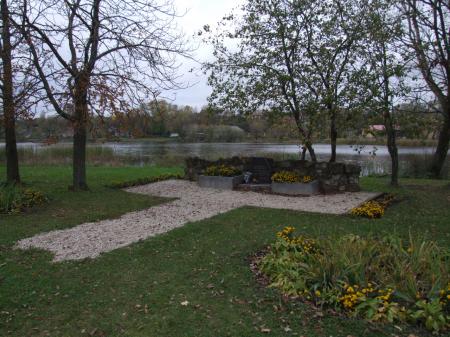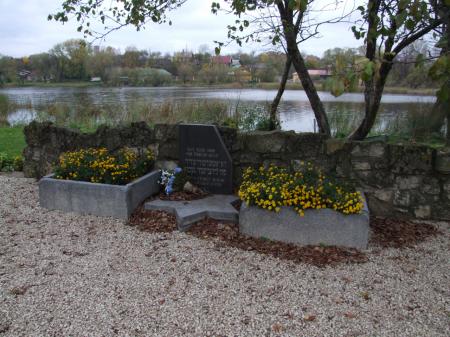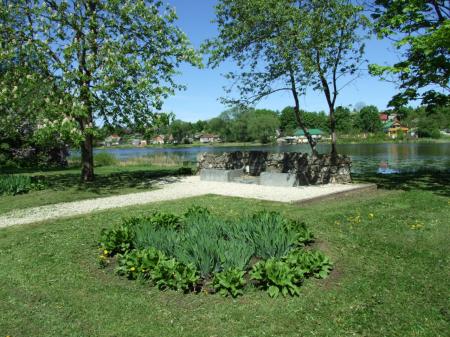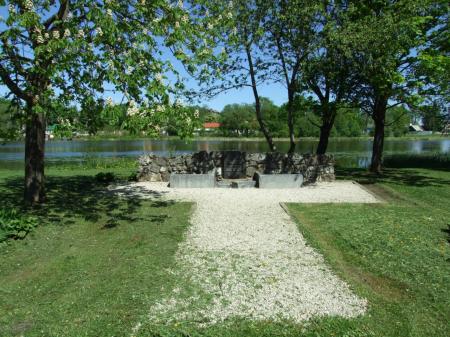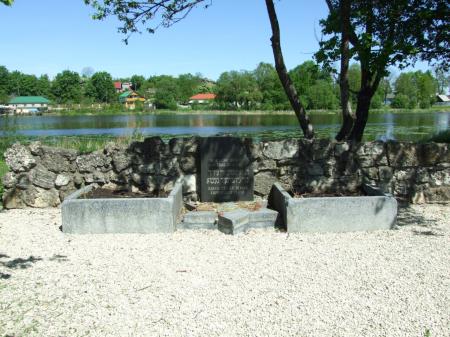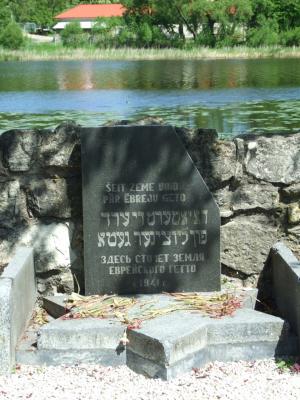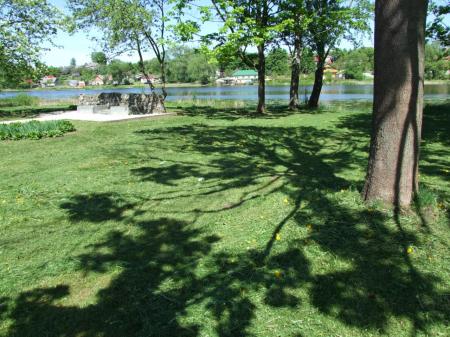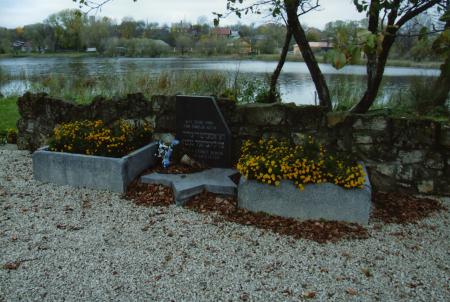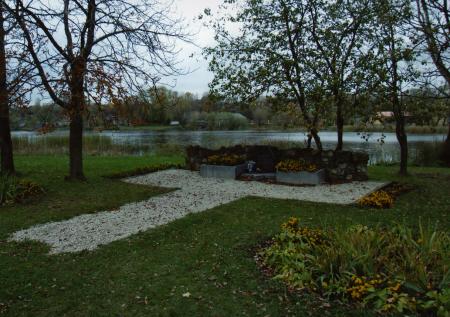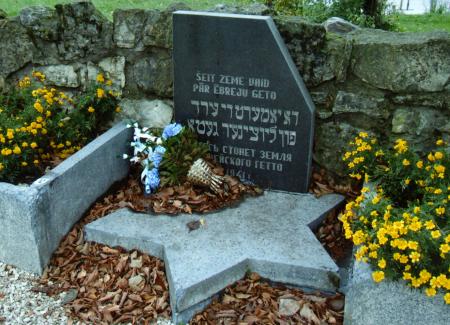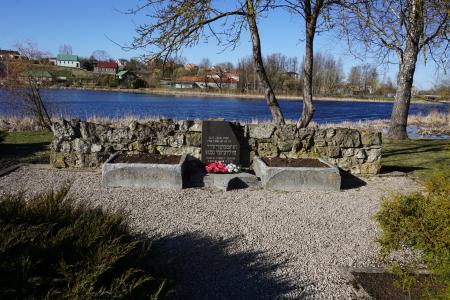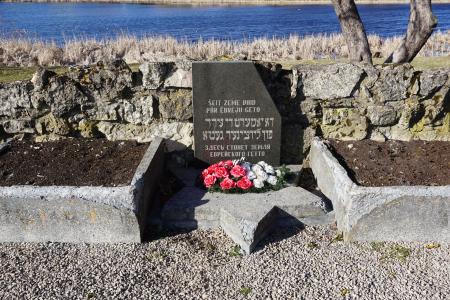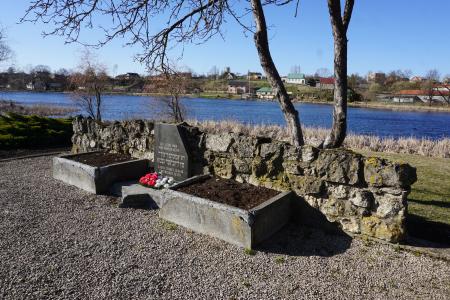Obj. ID: 9473
Memorials Ghetto memorial in Ludza, Latvia, 1991
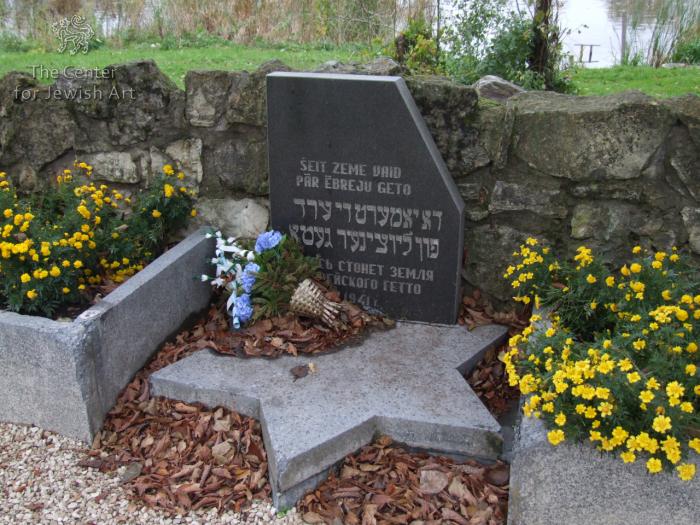
Memorial Name
No official name
Who is Commemorated?
Victims of the Ludza Ghetto
Description:
The monument is situated between the Mazā Ezerkrata Street and the Mazais Ludzas Lake, not far from the existing synagogue.
A path leads from the street to a low stone wall, in front of which the monument is situated. It is a low black granite stele standing on a concrete pedestal in the form of the Star of David. Two concrete boxes for flowers flank the monument.
Inscriptions
Latvian
Šeit zeme vaid
pār ēbreju geto
Translation: Here groans the earth of the Jewish ghetto
Yiddish
דא יאמערט די ערד
פון ליוצינער געטא
Translation: Here groans the earth of the Lutsin ghetto
Russian
Здесь стонет земля
еврейского гетто
Translation: Here groans the earth of the Jewish ghetto
Commissioned by
[To be determined]
sub-set tree:
The Nazi German troops entered Ludza on 3 July 1941. On the following day, arrests of Jewish refugees and “Soviet activists” began. 25 people from among the arrestees were shot on the outskirts of the town, in the vicinity of a brick factory, on July 15, 1941. A ghetto was established in Ludza in mid-July 1941. 35 old Jews, including rabbi Benzion Don-Ihie, were shot at the end of July 1941 at the intersection of Rēzekne St. with Parka St, Liepājas St. and Rupniecibas St. After the war they were reinterred in the Jewish cemetery. 10 more Jews were shot at “Lauderi” farm at the end of July 1941. They were also reinterred in the Jewish cemetery.
A mass murder of Jews from the Ludza ghetto took place in mid–August 1941, when about 600 people were taken to the Cirma Lake (about 7 km from Ludza) and shot. 40 more Jews were shot there on August 27, 1941. In October 1941 part of the remaining ghetto inmates were sent to Daugavpils, some were shot near Dzerkaļi village, and others were shot near Kotāni village on November 13, 1941. The last inmates of the ghetto were murdered in Garbari Forest on April 3, 1942.
A monument to the ghetto was erected in 1991 (Rochko, p. 39).
"Holocaust Memorial Places in Latvia," a website by the Center for Judaic Studies at the University of Latvia, http://memorialplaces.lu.lv/memorial-places/latgale/ludza-municipality-ludza-maza-ezerkrata-street/.
Meler, Meyer, Mesta nashei pamiati: Evreiskie obshchiny Latvii, unichtozhennye v Kholokoste (Riga: by the author, 2010), p. 269.
Rochko, Josif, Jewish Latgale: Guidebook (Daugavpils, by the author, 2018), p. 39.



